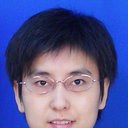Analysis of phenolic acids of Jerusalem artichoke (Helianthus tuberosus L.) responding to salt-stress by liquid chromatography/tandem mass spectrometry.
Kata kunci
Abstrak
Plant phenolics can have applications in pharmaceutical and other industries. To identify and quantify the phenolic compounds in Helianthus tuberosus leaves, qualitative analysis was performed by a reversed phase high-performance liquid chromatography coupled with tandem mass spectrometry (HPLC-MS/MS) and quantitative analysis by HPLC. Ten chlorogenic acids (CGAs) were identified (3-o-caffeoylquinic acid, two isomers of caffeoylquinic acid, caffeic acid, p-coumaroyl-quinic acid, feruloylquinic acid, 3,4-dicaffeoyquinic acid, 3,5-dicaffeoylquinic acid, 1,5-dicaffeoylquinic acid, and 4,5-dicaffeoylquinic acid) by comparing their retention times, UV-Vis absorption spectra, and MS/MS spectra with standards. In addition, four other phenolic compounds, including caffeoyl glucopyranose, isorhamnetin glucoside, kaempferol glucuronide, and kaempferol-3-o-glucoside, were tentatively identified in Helianthus tuberosus leaves for the first time. The 3-o-caffeoylquinic acid (7.752 mg/g DW), 4,5-dicaffeoylquinic acid (5.633 mg/g DW), and 3,5-dicaffeoylquinic acid (4.900 mg/g DW) were the major phenolic compounds in leaves of Helianthus tuberosus cultivar NanYu in maturity. The variations in phenolic concentrations and proportions in Helianthus tuberosus leaves were influenced by genotype and plant growth stage. Cultivar NanYu had the highest concentration of phenolic compounds, in particular 3-o-caffeoylquinic acid and 4,5-dicaffeoylquinic acid compared with the other genotypes (wild accession and QingYu). Considering various growth stages, the concentration of total phenolics in cultivar NanYu was higher at flowering stage (5.270 mg/g DW) than at budding and tuber swelling stages. Cultivar NanYu of Helianthus tuberosus is a potential source of natural phenolics that may play an important role in the development of pharmaceuticals.


